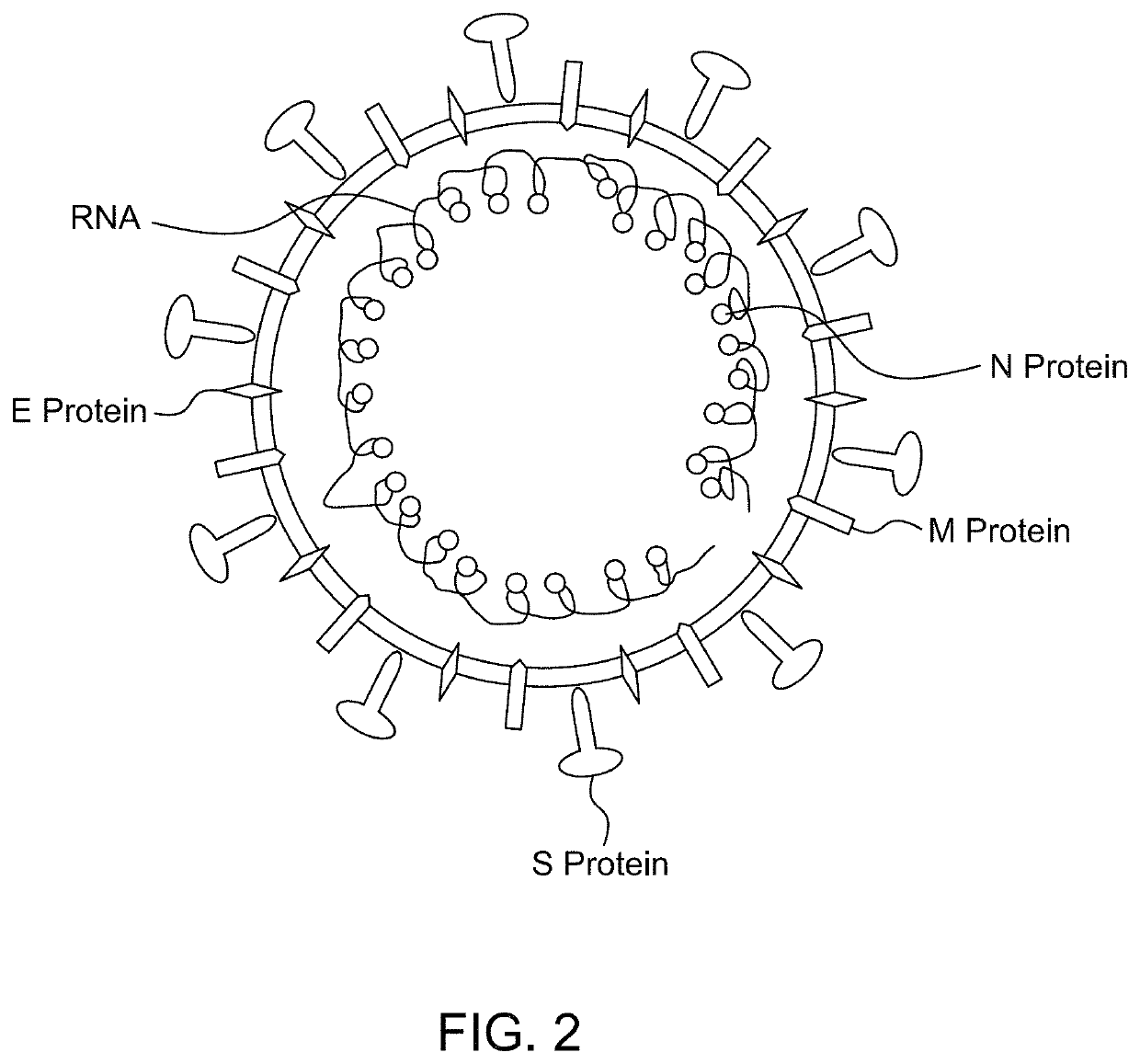Antibody binding detection method for detecting MERS-CoV
a detection method and antibody technology, applied in the field of immunodiagnostic products and methods, can solve the problems of no clinically approved treatment or vaccine against mers-cov, unsuitable for point-of-care testing (poct) or rapid bedside diagnosis, and achieve the effect of improving their immunogenicity or their ability to bind
- Summary
- Abstract
- Description
- Claims
- Application Information
AI Technical Summary
Benefits of technology
Problems solved by technology
Method used
Image
Examples
example 1
Immunization and Collection of Eggs Containing IgY
[0098]Twenty Lohmann laying hens which are 25 weeks old are bought from a local broiler farm. The animals are placed in cages, which are dedicated to broiler chickens, in groups of two animals per cage under a regimen of a 12 hr:12 hr light-dark cycle at an ambient temperature of 24±3° C. and at a relative humidity of 75±5%. Water and commercial food are offered ad libitum. Further description of Lohmann laying hens and other suitable chickens is available at hypertext transfer protocol: / / frabopoultry.com / wp-content / uploads / 2016 / 10 / Lohmann_LSL-Lite.pdf (last accessed Jan. 21, 2021, incorporated by reference).
[0099]Hens are divided into two immunization Groups A and B each with ten hens.
[0100]As detailed below, the ten hens in an immunization Group A are injected with 200 μg of a commercially available recombinant MERS-CoV N protein in PBS (phosphate buffered saline) in combination with an adjuvant and the ten hens in a control Group ...
example 3
Determination of Reactivity of Anti-NP IgY Antibodies by ELISA
[0114]The reactivity of samples of anti-N-protein IgY antibodies obtained as described above is determined by ELISA. Briefly, recombinant MERS-CoV N protein at a concentration of 2.5 mg / mL is contacted with ELISA plates overnight to coat the plates with the N protein. Unbound sites are blocked with skim milk after which the plates are washed. After washing 100 uL / well of the anti MERS-CoV yolk antibodies of the NP-immunized Group A and yolk antibodies from adjuvant control Group B are incubated in the plates for 90 mins and then washed.
[0115]After washing a conjugate antibody that binds to IgY antibodies is added for detection of IgY bound to the N protein on the plates.
[0116]A colorimetric substrate is used to visually determine an amount of antibody binding to the plates.
[0117]Color intensity is measured by ELISA reader and correlates with amount of N protein IgY antibodies in samples.
example 4
Western Blotting Assay
[0118]Western blotting is performed to check the specificity of the anti MERS-COV NP IgY antibodies.
[0119]MERS-CoV N protein is fractionated on 8-12% (SDS-PAGE) and transferred to polyvinylidene difluoride (PVDF) membrane (Milipore Ltd.).
[0120]The membrane is then washed for 10 minutes in 1× tris buffered saline with 0.1% Tween-20 (TBS-T) and blocked overnight with 5% skim milk in TBS-T. Membranes are washed for 1 hour at 10-minute intervals in TBS-T.
[0121]Subsequently, the membrane is incubated with anti MERS-CoV yolk antibodies of the first and second groups and yolk antibodies from adjuvant control group for 1 hour at RT is followed by incubation with HRP-labeled goat anti-chicken IgG.
[0122]Protein detection is carried out using an HRP colorimetric detection system.
PUM
| Property | Measurement | Unit |
|---|---|---|
| OD | aaaaa | aaaaa |
| temperature | aaaaa | aaaaa |
| temperature | aaaaa | aaaaa |
Abstract
Description
Claims
Application Information
 Login to View More
Login to View More - R&D
- Intellectual Property
- Life Sciences
- Materials
- Tech Scout
- Unparalleled Data Quality
- Higher Quality Content
- 60% Fewer Hallucinations
Browse by: Latest US Patents, China's latest patents, Technical Efficacy Thesaurus, Application Domain, Technology Topic, Popular Technical Reports.
© 2025 PatSnap. All rights reserved.Legal|Privacy policy|Modern Slavery Act Transparency Statement|Sitemap|About US| Contact US: help@patsnap.com



